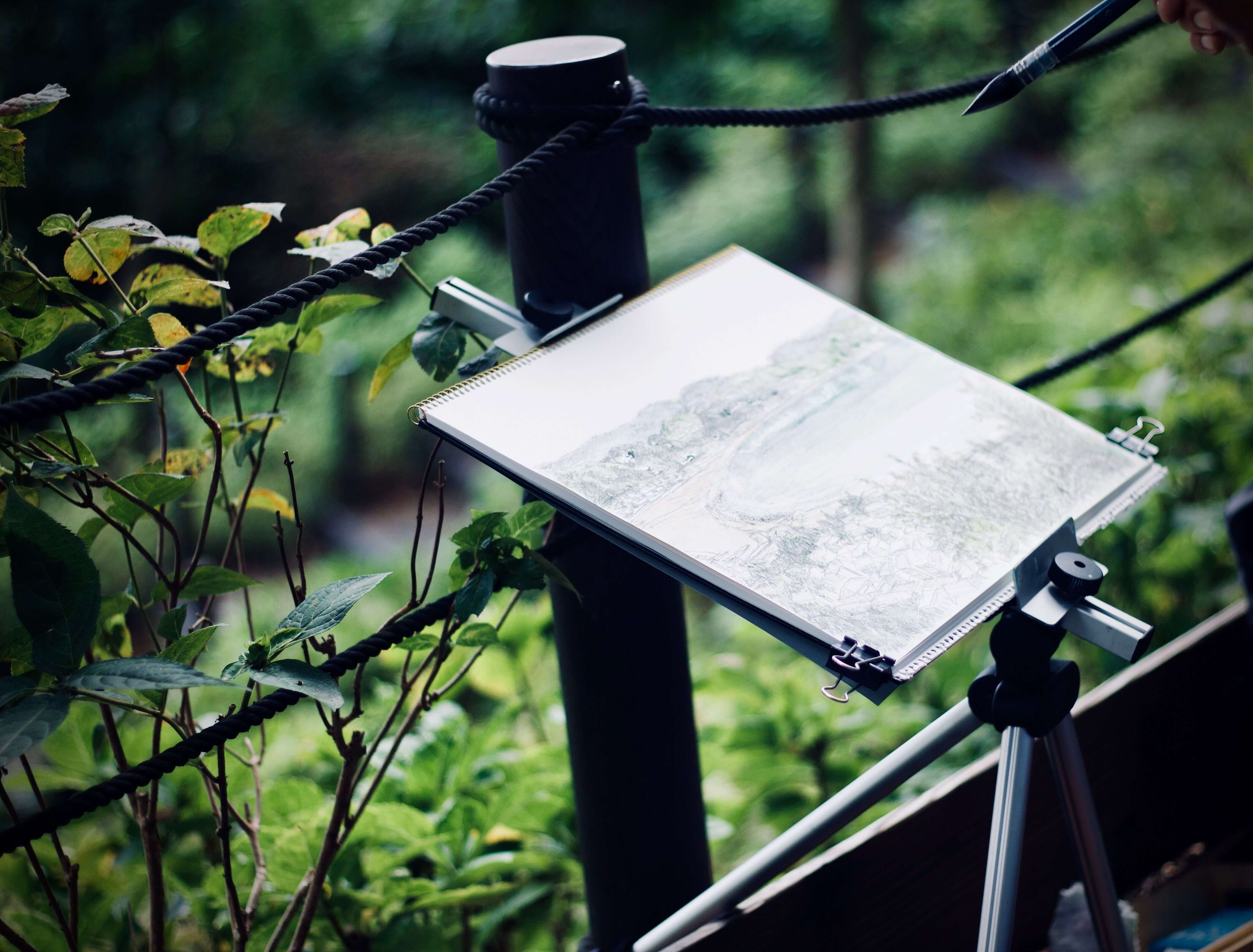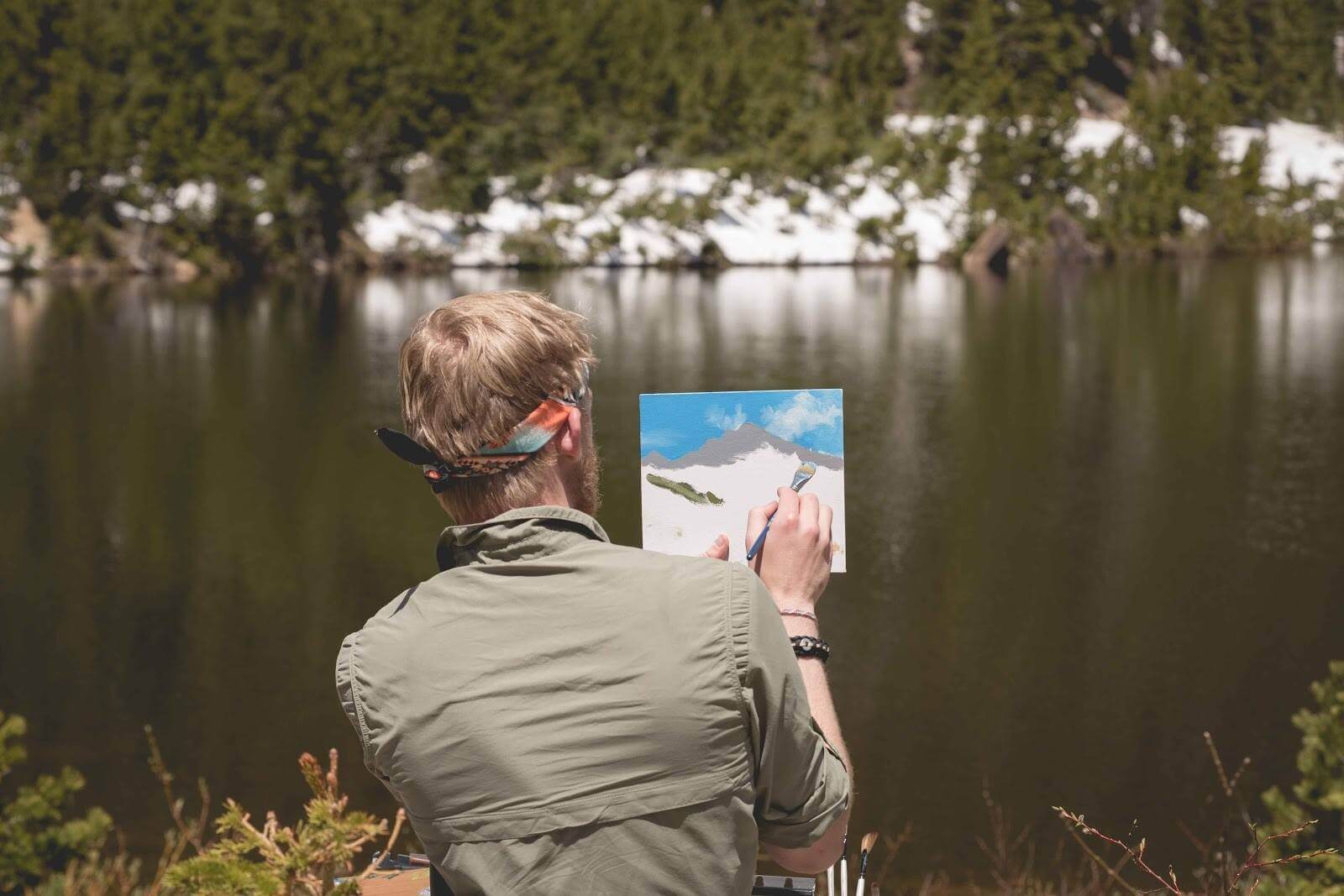
Plein Air Set-Up by Daniel Folta.
There is a great difference between doing plein air landscapes and painting a landscape in a studio. You can certainly do a landscape painting in the studio from a photograph. However, it is a different experience compared to painting outdoors and seeing your subject with your own eyes.
There are several things that are different in the plein air approach, but by considering light and shadow, plein air landscape painting can be a valuable tool in learning how to see and paint.

Photo by Alfred Leung on Unsplash
Capturing Light in a Plein Air Painting
Probably the biggest difference in the plein air experience is that your light source is constantly moving, never sitting still. You will only have a small window to work before the scene is completely different from when you began. In the studio we talk about the subject never simply being the objects sitting on the table. It's never the figure, it's always the light.
There the light is a constant, but outside in the real world, it's not. It's changing every moment, incrementally, so you don't see it minute by minute. But if you look at the light and make markers for where the shadows and the lights begin at one o'clock, by three o'clock they are completely different. And the shapes created by that light have changed as well.

When painting a landscape, movement of the light must be carefully considered. Photo by Jelleke Vanooteghem on Unsplash
How to Paint a Landscape
The trick to doing landscapes outdoors is to start by putting down your shadows the same way we do in studio. Now in plein air painting, you want to move quickly because you have about a three-hour window to work before your light changes too drastically. Often times I recommend working from noon until three. The sun is pretty much overhead and so its movement is less obvious. If you start at sunrise and work until noon, there will be a massive change with the shadows on the subject. With light overhead in the afternoon it’s not so dramatic.

Daniel Folta painting a landscape, 2016 (www.danielfolta.com).
What you want to do is to quickly lay in your shadows and use them as anchors. They become like an immovable part of the painting. If you can get them laid down in several minutes, you can get all of your proportions, placements, and all of your shadows scribbled in.
Then you can spend the next two and a half hours painting the lights. Those lights aren't exactly what you're looking at because the shapes of the lights are going to change.
How to Paint the Impression of Time
You're not trying to freeze time, but you do have to anchor it.
Why Plein Air Painting is Important

Daniel Folta painting a landscape, 2016 (www.danielfolta.com).
Painting outdoors will change and improve your understanding of things when you return to painting from a photograph. Your experience in the real world and actively viewing life around you is going to change how you view a photograph.
You see, the thing is that once you've had the experience of working outdoors in the real world under natural light, you can look at a photograph of the same subject and realize just how poor photography is at recording to the world around us. That realization is a good thing because it gives you perspective and it's another place to develop understanding.
Learning to see the full spectrum of light and painting outside in natural light is a very good thing for developing the ability to take subject matter that is not under natural light and make it feel as though it is.
It comes down to the more you know, the more thoughtful experience you have is important. Falling down a flight of stairs is an experience but that's not going to help you! In painting, we want thoughtful experiences.
Conclusion
There are great lessons to be had from painting plein air that have nothing to do with painting landscapes: it's about the light.
It's always about light. Understanding that is critical to being an artist. It's always about the light. The subject is almost always irrelevant.
Plein air painting is a very easy way to teach yourself to see light clearly, because you can step outside on any day and do it. You don't need models, you simply go outside, set up, and paint.
It doesn't have to be a refined finished painting, it can be a very loose blocking, or just color capture, or value capture. See if you can capture the relationships.
The knowledge of relationships will be valuable to you in anything you do if you try to understand why something is what it is.
FREE MASTERCLASS:
The 4 Part Framework to Develop Artistic Excellence in 12 Months
